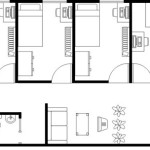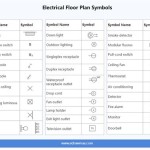Do It Yourself Log Home Plans: Essential Aspects to Consider
Building a log home can be a rewarding and fulfilling experience, but it's crucial to approach it with a comprehensive understanding of the essential elements involved. Whether you're a seasoned DIY enthusiast or embarking on your first log home project, careful planning and thorough knowledge will lay the foundation for a successful outcome.
Log Selection and Preparation
The type and quality of logs you choose will significantly impact the durability and aesthetic appeal of your log home. Consider factors such as species, moisture content, and straightness when making your selection. Proper seasoning and preparation of logs involve removing bark, leveling the surfaces, and cutting notches and joints with precision.
Foundation and Framing
A solid foundation is essential for the structural integrity of your log home. Choose a foundation type that aligns with your soil conditions and climate. Carefully plan the framing, including wall heights, window and door openings, and roof design. Proper framing ensures an even weight distribution and a sturdy framework for the logs.
Log Assembly and Chinking
Log assembly involves carefully stacking and securing the logs in place. Interlocking joints, such as dovetails or corner notches, provide stability. Chinking is the process of sealing the gaps between logs with a pliable material, typically mortar or a specialized sealant. This step helps prevent air infiltration and moisture damage.
Roofing and Insulation
The roof protects your log home from the elements and contributes to its overall design. Choose roofing materials that complement the style of your home and withstand the local climate. Insulation is crucial for energy efficiency and comfort. Consider options such as batt insulation, spray foam, or cellulose for both walls and roofing.
Windows and Doors
Windows and doors are essential for bringing in natural light and ventilation. Carefully plan the size, placement, and style of these features to maximize functionality and aesthetic appeal. Proper installation ensures airtight sealing and prevents heat loss or air infiltration.
Exterior and Interior Finishes
Exterior finishes such as paint or stain protect your log home from weathering and enhance its curb appeal. Choose finishes that are compatible with the type of logs used and provide adequate protection against the elements. Interior finishes include flooring, wall coverings, and ceilings. Consider materials that complement the rustic yet elegant atmosphere of a log home.
Cost and Time
Building a log home can be a significant investment in terms of both cost and time. Plan a realistic budget that accounts for materials, labor, and unforeseen expenses. The construction timeline will vary based on the size and complexity of your project, but allow ample time for planning, preparation, and assembly.
By thoroughly considering these essential aspects and consulting with erfahren professionals, you can embark on your DIY log home project with confidence. Remember, the end result will be a unique and beautiful home that reflects your hard work and attention to detail.

Tiny Log Cabin Kits Easy Diy Project Small Floor Plans

30 Free Cabin Plans For Diy Ers Small Log Floor

Free Bird House Plans Log Cabin Easy Homemade Box Diy Projects Patterns Monograms Designs Templates

23 Diy Log Cabins Build For A Rustic Lifestyle By Hand The Self Sufficient Living

Cabins Shed Plans Diy On Instagram Now Build The Best Tiny Homes Sheds Your Own From House Cabin Small Log Rustic

A Guide To Owning And Building Your Own Log Cabin Kit Builders Homes Plans

Beautiful Log Cabin For 56 000 Home Design Garden Architecture Blog

Do You Want To Build Log Cabin Homes Consider These Factors Debatable Land

Certified Homes Settler Home Floor Plans

House Plan Plans And More Log Cabin Vacation








